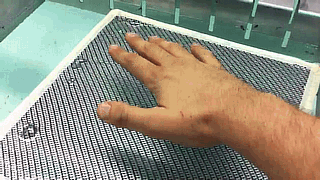It’s not just a matter of having enough honey for Rosh Hashana. Bees have a vital role in agriculture by pollinating vegetables and fruits.
Israel takes measures to ensure that its bee population remains steady. The Israeli government supports Israeli research into all the biological and botanical angles on CCD, from boosting bees’ immune systems to developing nectar-rich plants.
The Israeli Honey Board helps Israel’s 500 beekeepers implement innovative tactics to support a collective 110,000 hives. These include guidelines for eradicating Varroa mites, a parasite considered a core cause of CCD, and planting 80,000 to 100,000 seedlings yearly – especially eucalyptus trees – to give bees a varied, abundant diet. These seedlings are provided free by the nurseries of Keren Kayameth LeIsrael-Jewish National Fund (KKL-JNF).
Aviv Eizenband, head of forestry and professional development at KKL-JNF’s Forest Service, explains, “Beekeepers have land but don’t have enough flowers and shrubs to attract bees. So over the past 15 to 20 years we are cooperating with organizations like the Honey Board to make Israel greener and help beekeepers attract bees at the same time.”
Thanks to winter flowering species introduced by the KKL-JNF, beekeepers rarely have to feed the bees with sugar water in cold months, a practice that is costly, not as healthful for the bees and doesn’t produce the best honey.
“We are always looking for which plants and trees the bees like, and we work with researchers seeking solutions for bees because plants and bees are directly connected,” says Hagay Yavlovich, director of KKL-JNF’s Seeds and Nurseries Division.
Yavlovich says one of the causes of CCD is a monotonous diet. “In central Kansas, for example, the bees see fields of only soybeans and corn, and that’s not good. We assume the fact that we give bees a variety of flowers to taste from makes them stronger and we have fewer problems with CCD than in other countries.”





